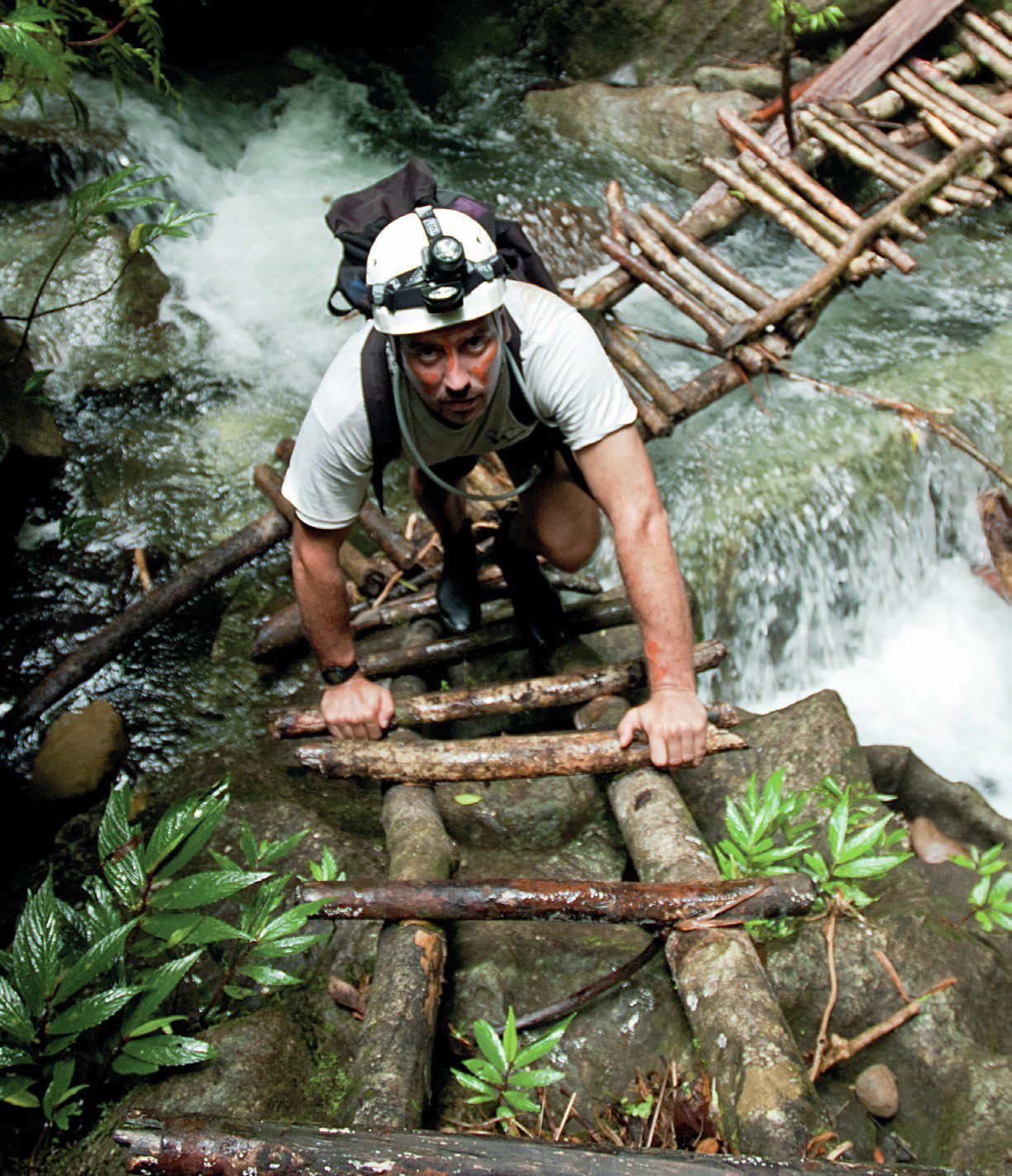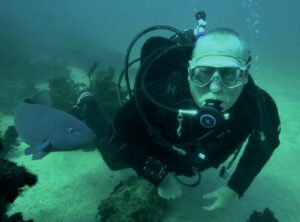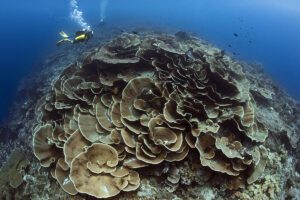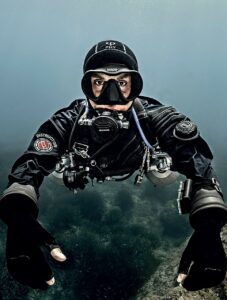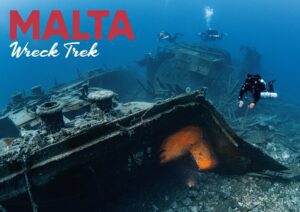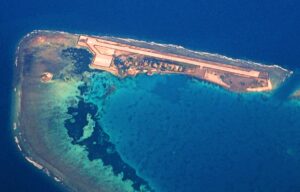We chat to technical diving instructor and screenwriter John Garvin about how he got started in diving, his cave-diving exploits in the Caribbean, and his work behind the scenes on Avatar: The Way of Water.
Photographs courtesy of John Garvin and 20th Century Studios. © 2022 20th Century Studios. All Rights Reserved.
As we always do to kick off these interviews, how did you first get into diving?
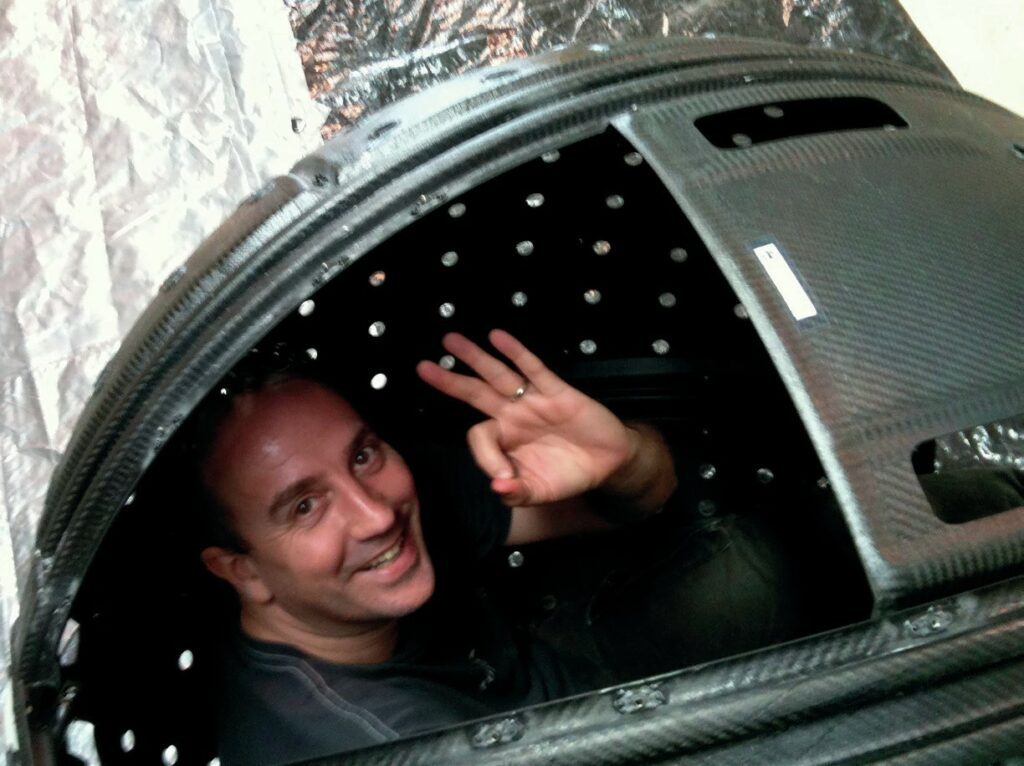
A: While I am now settled in Australia, I am originally from Blackpool in the north of England. I got into diving through the BSAC route, starting at university, and actually, coming full circle, it is all James Cameron’s fault – I was inspired to go diving after watching The Abyss, and blew my whole grant cheque on buying a full set of second-hand gear. I subsequently became a BSAC Advanced Instructor with a club in Manchester and spent many weekends travelling to some of the most-popular dive sites around the UK, as well as any quarries or inland sites we could just get wet in.
You were an early adopter of closed-circuit rebreathers and that technology has been close to your heart ever since. What is it about CCRs that capture your imagination so much?
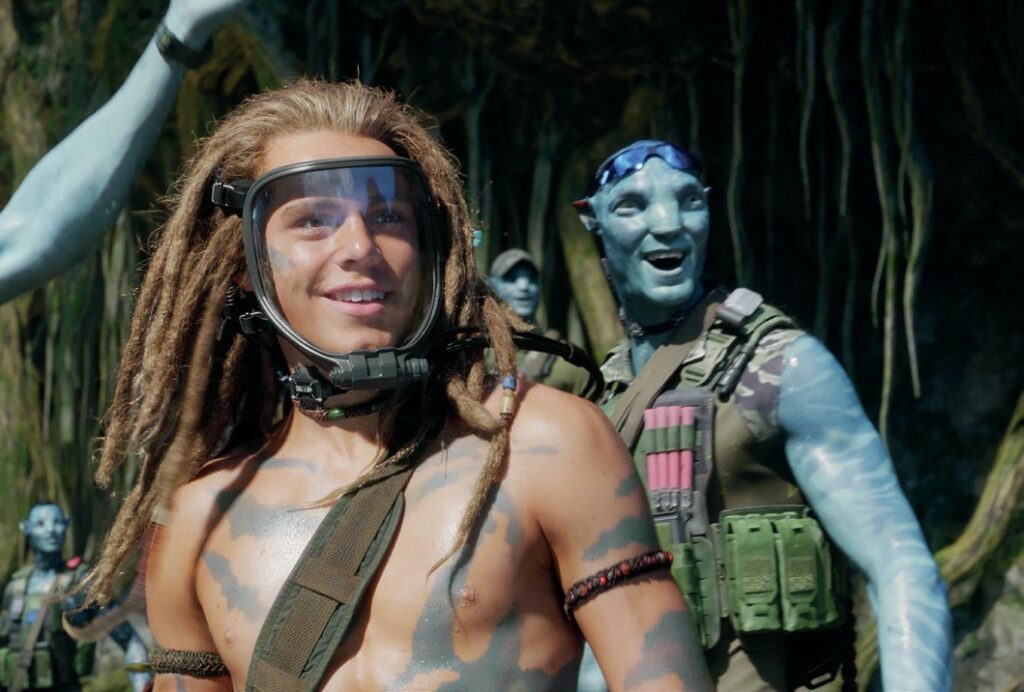
A: After going the recreational instructor route, I initially got into teaching technical diving with DV Diving in Bangor, Northern Ireland. I finally saw the light after ten years of diving in the UK and moved to the Turks and Caicos Islands to open a technical-diving school, where the warmer water, clearer visibility and wall systems provided much more conducive conditions for teaching advanced-level diving and closed-circuit rebreathers. I was one of the chaps who managed to get in on the bottom floor of CCRs, and in particular the AP Diving Inspiration – I was one of the first instructors teaching diving on this unit in the region.
I had an awful lot of Americans coming over to learn to dive CCRs, and this is where I kind of segued into film work – some of the people who were coming over for CCR training wanted it as a tool to spend longer underwater and film. Some were involved in documentaries like Blue Planet, and they wanted the benefits of four-hour dive times, no bubbles and getting closer to sealife.
You spent many years in the Turks and Caicos Islands, not only diving and teaching tech diving in the tropical waters surrounding the islands, but also exploring the many caves. What was it about venturing into the unknown underground that inspired you?
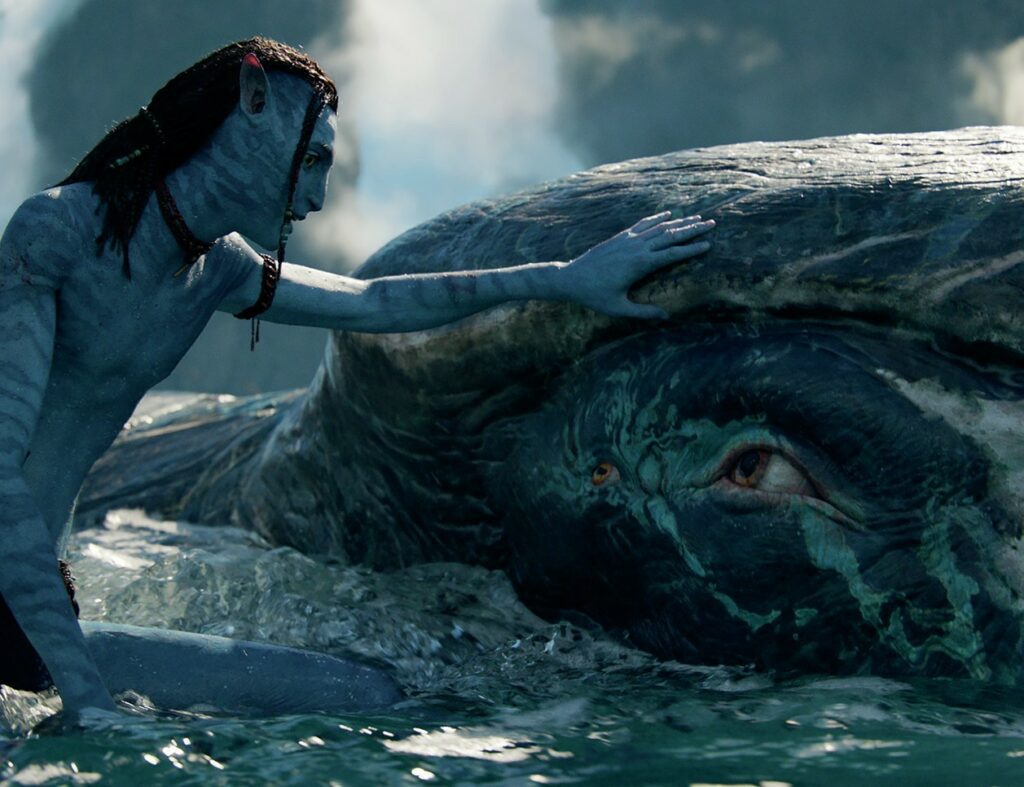
A: I was teaching full-time over there, and really needed kind of an escape for myself – I think if you don’t do your own type of diving, if you are only teaching all of the time, you can get burnt out pretty quickly. Someone handed me Rob Palmer’s book Deeper into the Blue Holes, and Rob had been exploring all of the Andros systems further up the chain in the Bahamas, and everything he described in this book was basically there in the T&Cs, except that none of the systems there had been explored.
I had no experience in caves, but I was a tech-diving instructor, and just applied all of the things from wreck diving to give it a go with a friend of mine. We nearly came a cropper on that very first dive in Cottage Pond, but luckily we surfaced. That was it, I was hooked – but I went to Florida to get properly trained with Tom Mount – and then spent ten years mapping cave systems on the islands.
Talking of CCRs, it was training the actors on Sanctum – for which you wrote the screenplay – to dive and then use CCRs that first introduced you to James Cameron, and you have since gone on various adventures and expeditions together. Before we get on to Avatar: The Way of Water, what are some of your most stand-out experiences with Cameron?
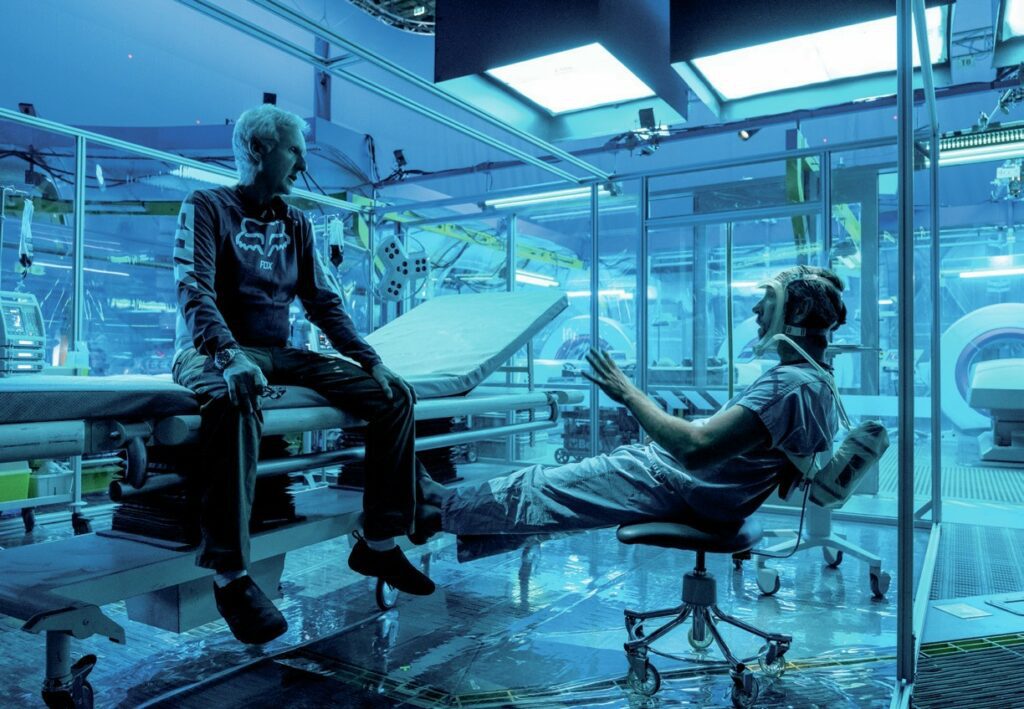
A: I have worked with James Cameron on numerous projects, the biggest ones being Sanctum, that was my first one, and then a little later on, Deep Sea Challenge, which was the submersible we built in Sydney, and I was responsible for the pilot sphere, so everything that went inside the sub and pilot safety. We used and developed CCR technology for his life-support system inside the sub. I then went on to work on Avatar and some other projects with him.
I think that period in Sanctum, where we had to train the actors, first of all how to dive, and then train them how to cave dive, and then just as they were reeling from that, how to cave dive using CCRs and full-face masks. It was a massively task-loading process, but the cast did all their own underwater scenes – it really is them on screen – and I think this helped build Jim’s confidence in my abilities, along with keeping him safe on Deep Sea Challenge with the rest of the team, and this got me the gig on Avatar.
So, Avatar: The Way of Water. This has to be one of the most-anticipated sequels ever, and one of the main reasons for this has to be the underwater sequences. What was it like to get asked to be involved in this mammoth project in the first place?
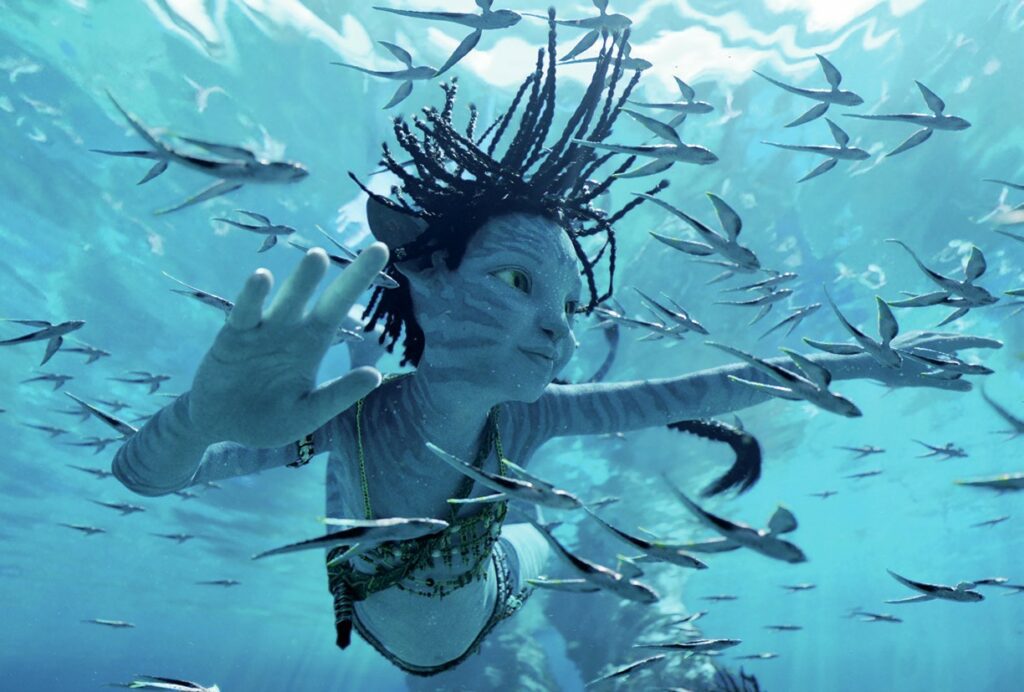
A: James Cameron knew that we would have some of the same issues we’d had on previous projects – complicated technology underwater, thousands of hours underwater with relatively new divers, we had to keep it safe, first and foremost, so I was brought on board relatively early on, and I was partly responsible for putting together a team of 25 divers in total, all from different departments, that allowed us to safely shoot Avatar underwater.
What elements of the in-water work were you involved in the most?
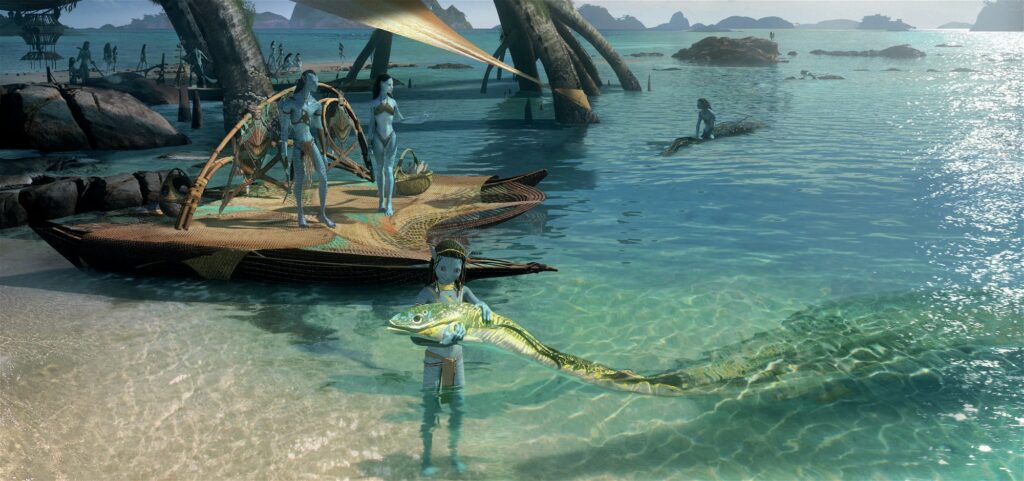
A: Avatar: The Way of Water was a wonderful cross-match between technical diving and freediving, and technical freediving, using nitrox mixes and all the rest of it, which was key to our success, but one of the more rewarding aspects of my job was to help consult and design, test and build, lots of the really cool toys used by the ‘humans’ – the underwater dive-equipment systems, the full-face masks, and so on.
What were some of the most-challenging aspects of filming Avatar: The Way of Water?
A: We had to crack the code for underwater motion-capture, it had never been done before. Many films choose to shoot ‘dry-for-wet’, where typically actors are in a dry studio, in harnesses in front of a green screen, and special effects are added later to make the hair move and show bubbles. But as any diver will tell you who has dived in a strong current, or used a DPV, your movements are dictated by the water, and it creates ripples on your skin, contortions on your face – I don’t care what people say, if you do ‘dry-for-wet’, it just looks fake.
Divers will spot it instantly, but even non-divers will watch ‘dry-for-wet’ performance capture and sense something is not quite right, and sometimes that is enough to sever the emotional connection you are supposed to be having with that character and the story at that time. Of course, Jim Cameron being a diver, he wasn’t going to have that, and so all of the underwater scenes were shot for real underwater.
Before we did that, we had to crack the code for motion capture. So we developed camera systems, and put the actors in wetsuits with the standard sensors, or reflectors, on them. We got to the point through specially designed cameras and by calibrating them correctly, we were getting some really good motion capture down at depth, but the problems arose when we were in the shallows close to the surface. It acted as a mirror and the sensors got confused, they didn’t know if they should be tracking, you know, the ball on Sigourney’s shoulder or the reflection. Jim describes it very well, that as soon as the actor came close to the surface, it was like when a fighter jet disperses chaff to confuse a missile system, the cameras didn’t know what to lock on to, the actor or the reflection. So we ended up using hundreds of thousands of floating balls to create a moving surface, which helped the motion capture take place, but allow the divers to surface through.
This was another reason for freediving. Divers on scuba exhale bubbles, and those bubbles similarly confused the motion capture system. Initially, I thought the only way to avoid this was to use CCRs, and so I turned up fully expecting to have to train certain members of the crew how to use them, but it ended up that Kirk (Krack) did such a great job training all of the cast and crew in technical freediving that the CCRs were not needed – they all had a working breathhold of two and a half to three and a half minutes.
This was the initial brief that Jim Cameron gave Kirk and I. He was very clear, he wanted all of the actors to have a working breath-hold of a minute and a half to two minutes. The last thing that he wanted was the actor being out of breath at a crucial moment when trying to get the shot. He also wanted the actors to look relaxed underwater, and the only way you are going to get relaxed performances is if the actors are properly trained.
As we always do to end these Q&As, what is your most memorable moment diving?
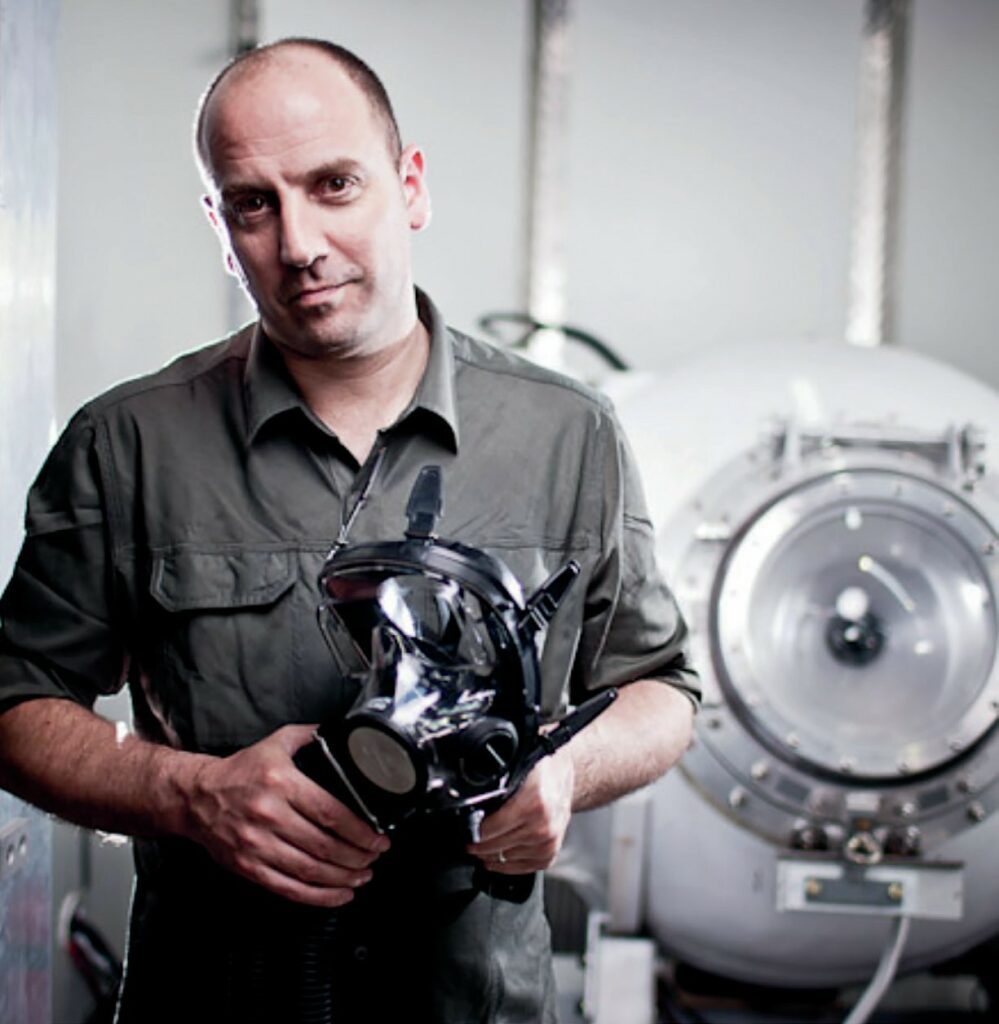
A: Ooh. I think, if I had the choice to do one more dive in my life, and go back and relive one dive. I think, I was lucky enough to be on one of the first expeditions to the Galapagos using fully closed-circuit rebreathers. I remember dropping down on the remote location of Darwin and Wolf, and just being surrounded by nature on steroids. Whalesharks, hundreds of schooling hammerheads, turtles, fish, everything – it had a very long-lasting impression, it was the most incredible display of bio-diversity I have ever seen or witnessed.
On the flipside, what is your worst experience diving?
A: I was in one of these cave systems in the T&Cs. It was a very fast-flowing cave, and I was on a CCR, and this ultimately is what saved my life. We misjudged the current and a large portion of the ceiling collapsed on me at a depth of just over 60m. I was on my own, it was a tight system, and I was buried. I lost the line. I was trying to scrabble about to dig myself out, eventually found my line, and was in zero vis – I luckily took the right route out, but my buddies were very concerned, as I was 20 minutes overdue, they thought they’d lost me.
I had lots of decompression to do, and a lot of serious thinking to do. It was just one of those things, it wasn’t even real complacency, it was just a wake up call about how badly things can go quite quickly on a dive. Thankfully, I know it is a cliché, but the training kicked in, and I couldn’t have been on a better piece of equipment to give me the time I needed down there. If I’d been on open-circuit, it could have been a very different outcome.
What does the future hold for John Garvin?
A: There is another film project I am working on that I can’t talk about at the moment, that should be out in the next couple of years, and it has a heavy diving element. I am also very much looking forward to returning to Pandora and becoming a part of the additional sequels.
I am very much looking forward to the next month. It was four years of my life spent on Avatar: The Way of Water, and I can’t wait to see the response. There have always been these key films that have come out and inspired hundreds of thousands of divers to embrace the oceans, such as Cousteau’s The Silent World, the Seahunt TV series, The Deep, the aforementioned The Abyss, – these are all critical milestones, and I really hope that when Avatar: The Way of Water is released, it is a call-to-arms for a whole new younger generation of divers to get actively involved in the sport and see the oceans in another way.
I think the industry needs that as it recovers from the effects of COVID.
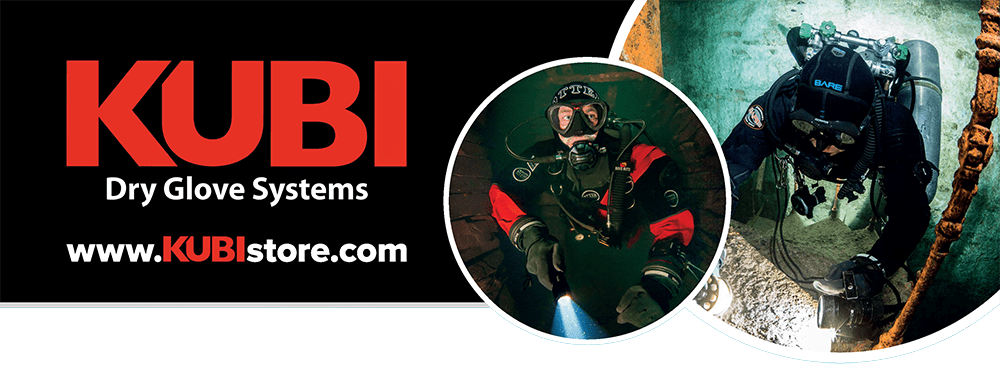
This article was originally published in Scuba Diver North America #12.
Subscribe digitally and read more great stories like this from anywhere in the world in a mobile-friendly format. Link to the article
